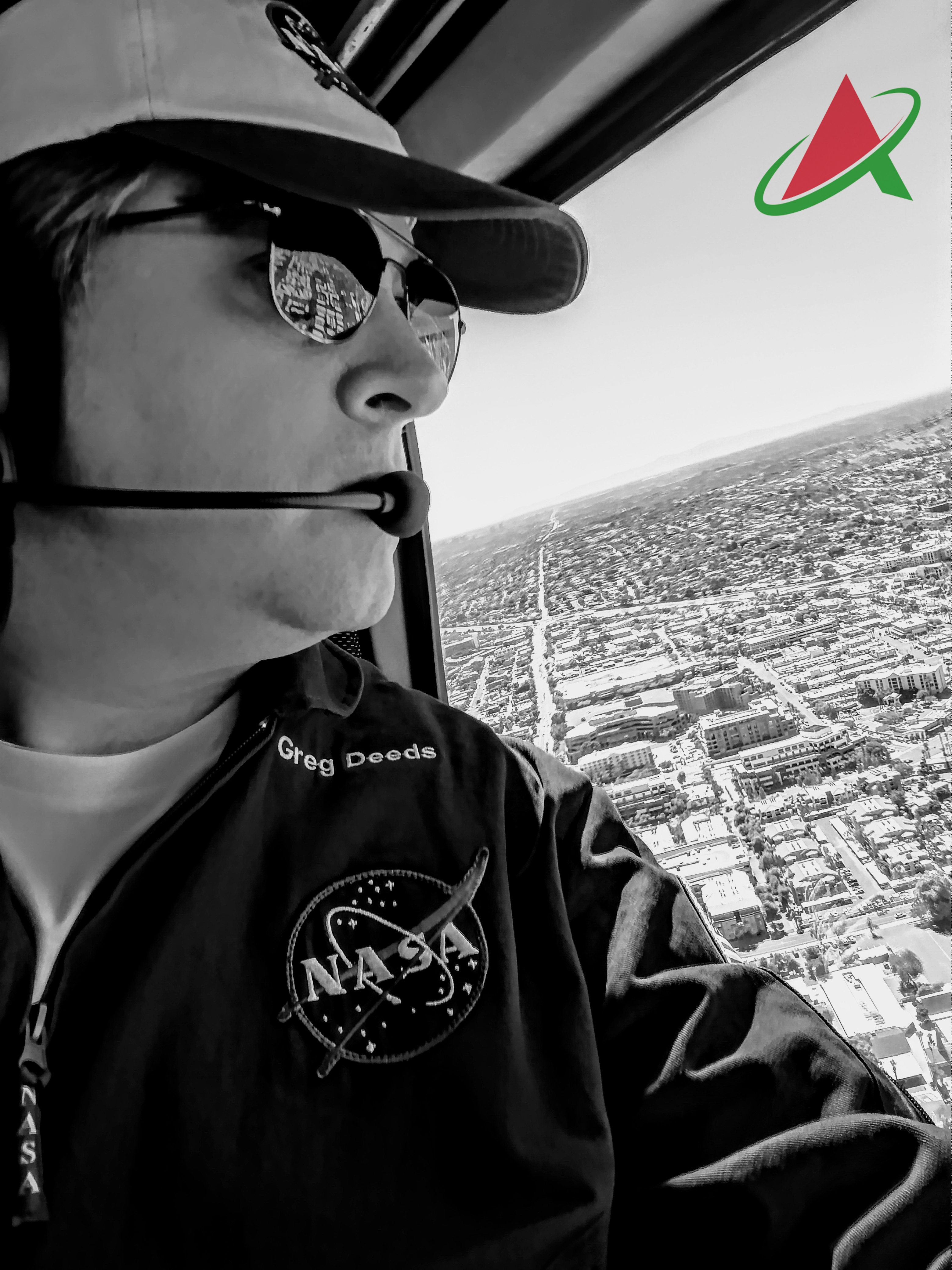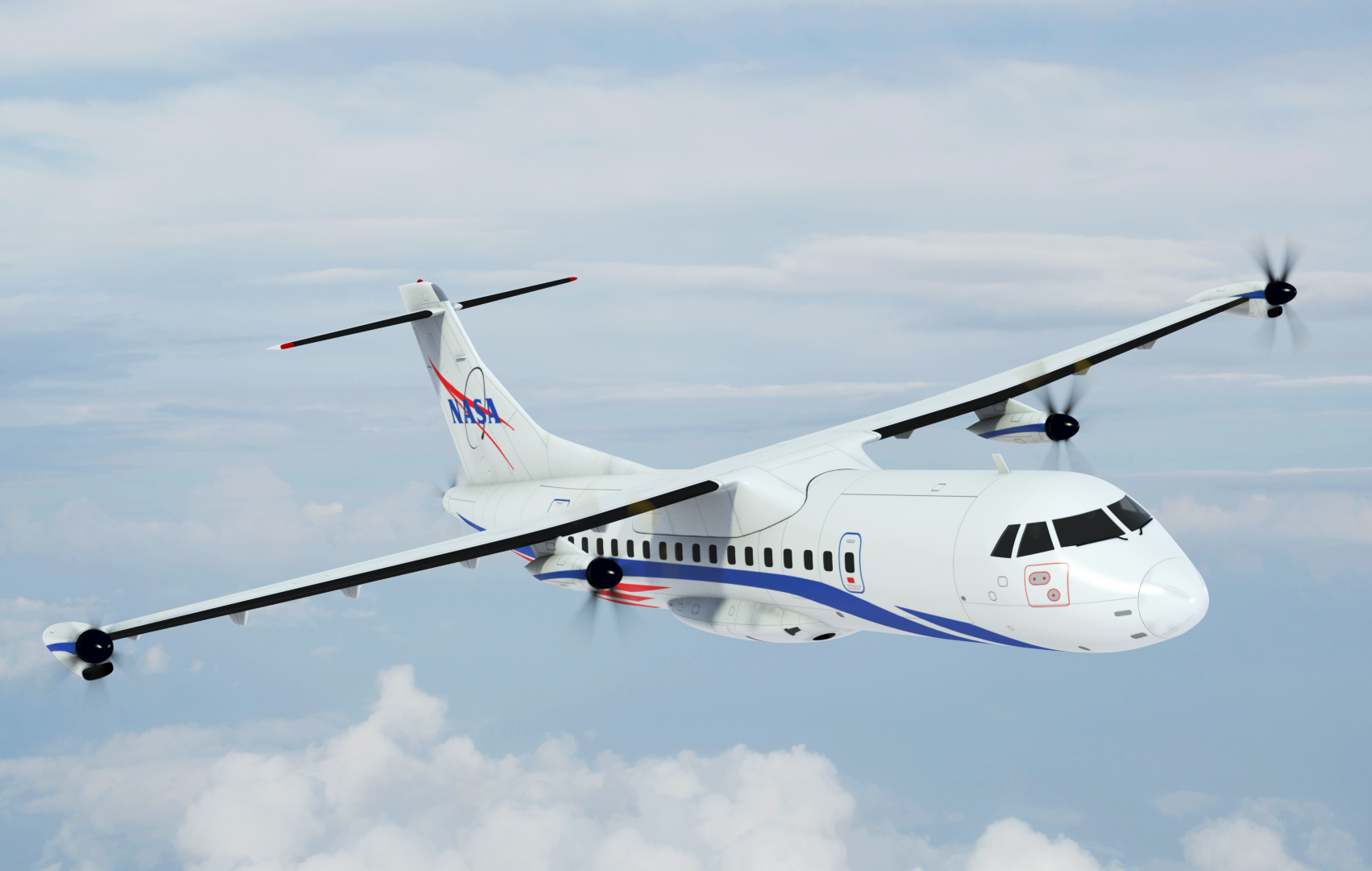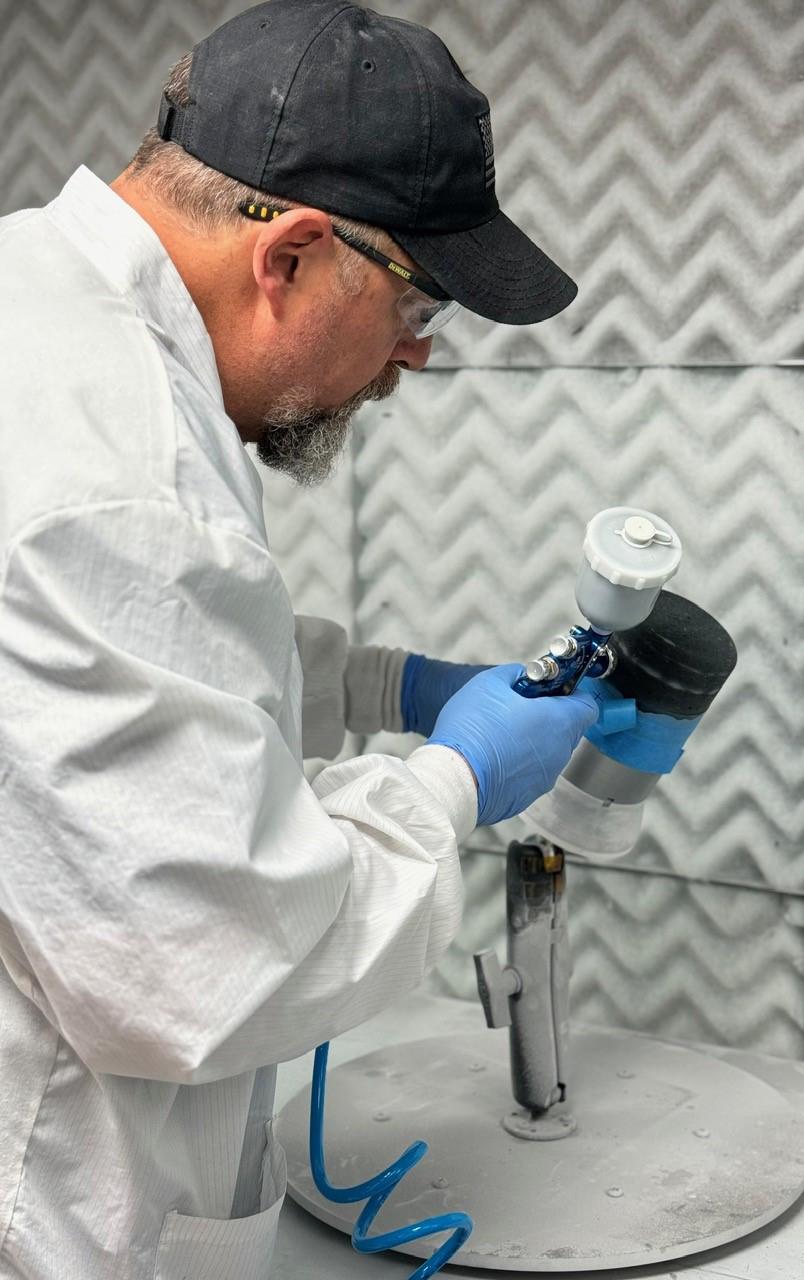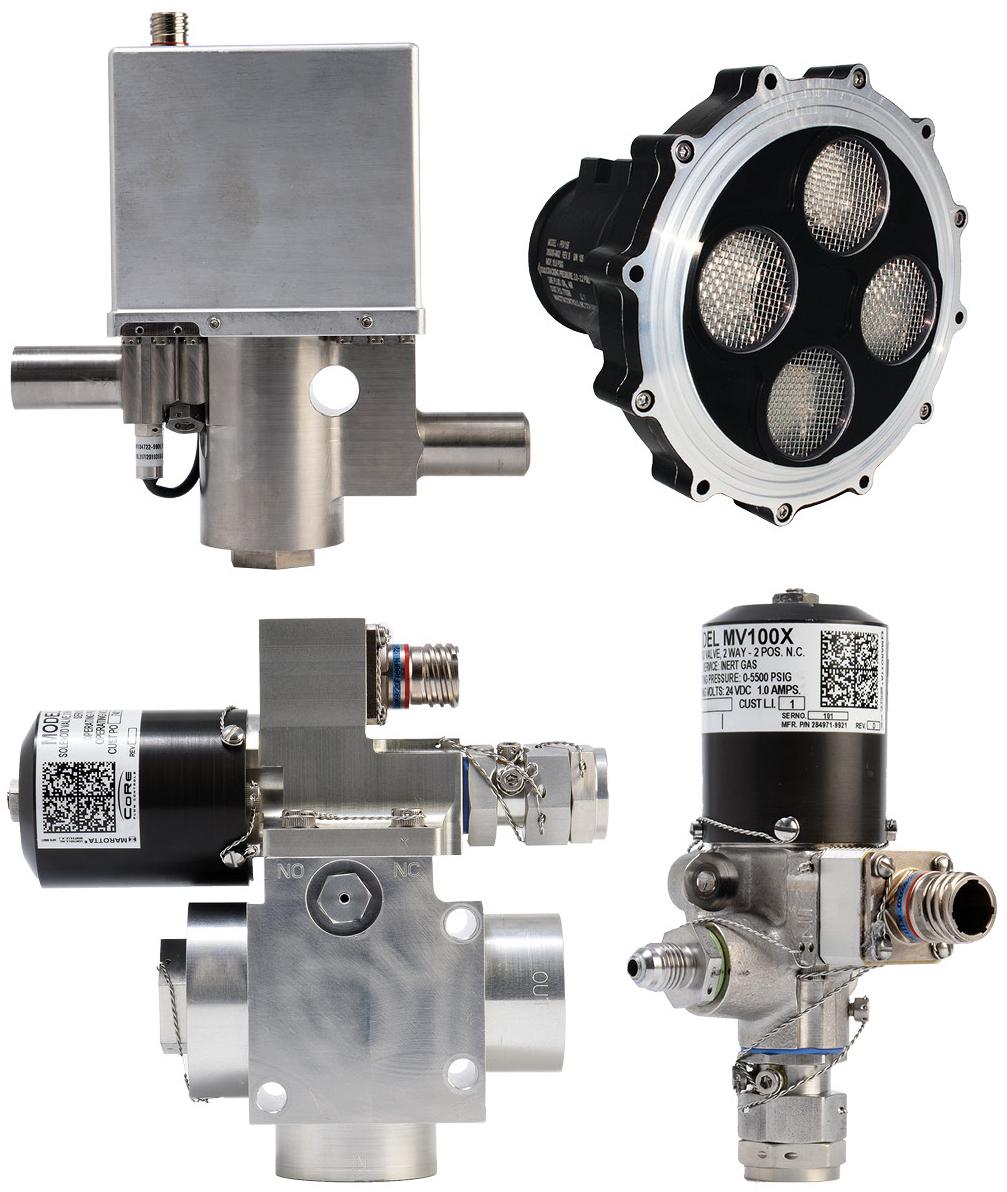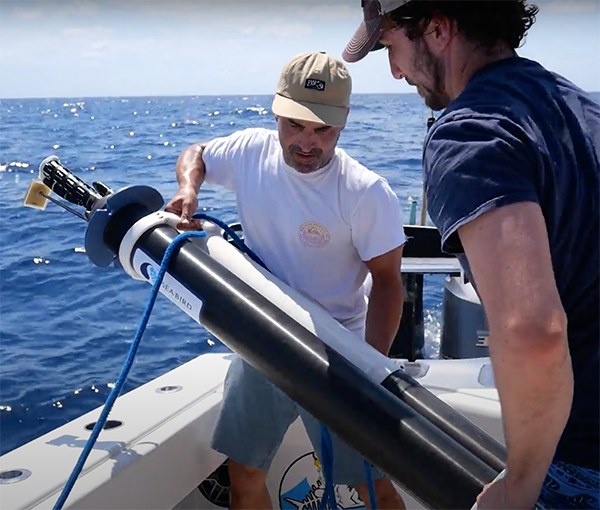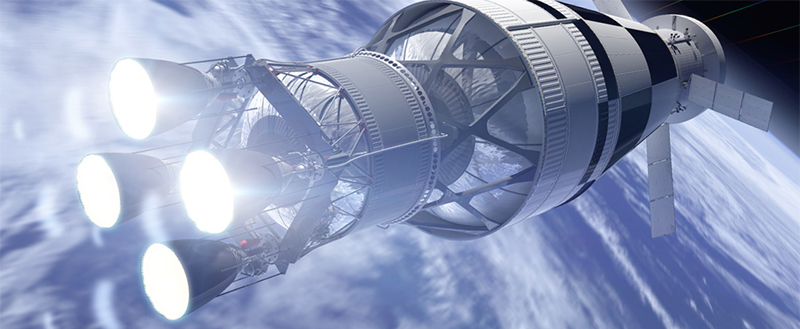
Original Cryogenic Engine Still Powers Exploration, Defense, Industry
NASA Technology
At a time when cell phones and automobile features are outdated after a few short years, it may seem impossible that any technology would remain virtually unchanged over decades. But the world’s first cryogenic fuel-powered rocket engine, a NASA spinoff, remains the most-used upper-stage rocket engine in the United States more than 50 years after its creation.
The RL10 rocket engine, first successfully flown in 1963, has been crucial to NASA’s space exploration and has also put hundreds of commercial and military payloads into orbit, enabling satellite communications and satellite-based defense operations. What’s more, after more than half a century, only a handful of countries have the technology, pioneered under the program, to power rockects with liquid hydrogen and oxygen.
The RL10 was matured under a contract between NASA’s Lewis Research Center, now Glenn Research Center, and a division of Pratt & Whitney Aircraft, now part of Aerojet Rocketdyne. Both entities had previously worked on the technology independently.
In the 1940s, Lewis, then part of NASA’s predecessor, the National Advisory Committee for Aeronautics (NACA), had carried out extensive testing on high-energy liquid rocket propellants, including liquid hydrogen. Cutting-edge propulsion and cryogenic-handling technology remain two of the center’s specialties today.
Pratt & Whitney’s work with liquid hydrogen began in the 1950s, when Lockheed Corporation subcontracted with the company to create a liquid hydrogen-powered airplane engine, part of a top-secret project for the Department of Defense. To have space for noisy engine testing, Pratt & Whitney opened a facility on a large tract of land near West Palm Beach, Florida, where Aerojet Rocketdyne still builds RL10s.
Known as the SUNTAN project, the work was eventually abandoned as the team determined liquid hydrogen was too unwieldy for use in an airplane engine, at least with existing technology for handling cryogenics. However, a modestly funded liquid hydrogen engine test program within SUNTAN, known as Project Bee, was established at Lewis. Project Bee was a success and solidified the center’s reputation as an expert institution in handling liquid hydrogen for propulsion.
The project to build the first rocket powered by cryogenic engines, the Centaur upper stage, began in 1958, the year NASA was created. It started as a Department of Defense project, with the aim of putting heavy payloads into orbit, but the Space Agency took over the work a year later, moving it to Marshall Space Flight Center, with Pratt & Whitney designing and building the RL10 engines that would launch it.
After the Centaur exploded during its first test launch in 1962, Marshall officials were prepared to kill the program, but Abe Silverstein, center director at Lewis, convinced NASA Headquarters to move it to Lewis, whose test data and designs from years before in Project Bee had heavily influenced the Centaur and SUNTAN teams.
One of the engineers who carried out some of Lewis’ early cryogenic work was Bill Goette, who worked on injectors for different propellant combinations at Lewis under NACA and later would spend a decade heading the RL10 program.
Among other takeaways from the early Lewis research, Pratt & Whitney ended up adapting a concentric tube injector design created at the center.
“It was all on a research basis—there was never a specific end use in mind,” Goette says of the early work under NACA. “That was NACA’s role, working on basic research, taking risk out, and giving companies a heads-up on how to do things.”
Even after the Centaur program moved to Lewis, the engine work initially stayed at Marshall, because the RL10 was also planned to be used on the upper stage for the Saturn 1 launch vehicle, predecessor to the Saturn V that was to launch the Apollo missions. But Goette and others at Lewis, as well as contractor General Dynamics, worked to ensure the engine would also meet Centaur’s needs.
In 1963, the work paid off. Centaur launched on top of an Atlas booster rocket, marking the first successful flight of a cryogenic rocket engine. A few years later, NASA decided to shift direction for Apollo’s upper-stage rocket, but Centaur and the RL10 project lived on at Lewis, with Goette in charge of the engine program.
“Before it came to Lewis, they had built a number of the engines and tested them,” he says. “A lot of the bugs had been fixed.”
He says the engine was and remains remarkable for its efficiency. The high-performance combination of liquid hydrogen fuel and a liquid oxygen oxidizer generates more thrust per unit of fuel burned than any other propellant combination. That means a rocket can carry less fuel, which keeps the weight down, allowing more payload to be carried to orbit.
But the RL10’s expander cycle goes one step further in fuel efficiency and simplicity by eliminating the need to burn fuel to turn turbines that drive the fuel pumps. Instead, the cryogenic liquid hydrogen is used to cool the combustion chamber and nozzle, where it picks up heat and turns into hydrogen gas. This expansion of the hydrogen gas drives the turbine, which powers the pump.
“That’s essentially free energy,” Goette says, comparing the engine’s expander cycle to using the heat generated by a car engine to warm the interior. “I don’t think anyone else has built an engine with that kind of cycle.”
Following Centaur’s success, the liquid hydrogen propulsion technology developed under the RL10 program was also used to create the J-2 upper-stage engines for Saturn V that enabled the United States to put astronauts on the moon. Critical technologies and knowledge such as injector design, mitigating combustion instability, inhibiting propellant slosh, and hydrogen gas venting were essential for the success of the Saturn V. Eventually, liquid hydrogen and oxygen became the Nation’s go-to fuel for boosters and upper stages alike, including the Space Shuttle main engines and the Air Force’s most powerful launch vehicle, Titan IV. Liquid hydrogen is slated to be the fuel for both the core and upper stages of NASA’s planned Space Launch System. Centaur continues to fly today as the upper stage for Atlas V, and the RL10 also flies on Delta IV.
One challenge that remained when the program came to Lewis was that the engines needed to be capable of multiple starts in space to meet mission needs. But without gravity in orbit, the remaining fuel tended to float aimlessly in the tank. The Centaur already used small hydrogen peroxide thrusters to control its orientation, and Goette says a few more thrusters at the rear of the tank fixed the problem by creating enough forward momentum to keep the liquid propellants settled at the bottom of the tanks where the engine inlets were located.
Other changes included extending the engine’s nozzle and narrowing the thrust chamber throat to increase power and efficiency. Over the nearly 30 years that Lewis oversaw the Centaur program, both the rocket design and the RL10 engine continued to change and evolve.
Technology Transfer
Pratt & Whitney eventually took over management of the engine, but by then the engine that had arrived at Lewis with problems restarting was fully developed in several versions.
“The early 1960s version of the RL10 that was developed and matured under Lewis’ stewardship was a revolutionary prototype. But a lot of additional effort went into maturing that early model into the RL10A-3-3 that became a reliable workhorse engine during the 1970s,” says Jeff Breen, head of RL10 evolution at Aerojet Rocketdyne and formerly at Pratt & Whitney. “We have since evolved the RL10A-3-3 model six more times to achieve better performance and durability. However, I’d suggest that the current model, the RL10C-1, retains a large percentage of the heritage that can be attributed to the Lewis and Pratt & Whitney development partnership.”
Both the Centaur and the RL10 proved immensely popular from the late 1960s to the early ’90s, when the United States dominated commercial space launches. Breen estimates RL10 engines helped put into space about 90 percent of the large commercial satellites launched during that period. Today, it remains the upper-stage engine of choice to launch payloads for the U.S. military and other performance-demanding civilian missions. Many of the GPS satellites, an Air Force program that has come to play huge roles in industry and daily life, were inserted into orbit by RL10 engines.
NASA has used the Centaur to launch countless lunar and interplanetary exploration missions, from Surveyor 1, the first successful moon lander, to the Viking landers that were the first to explore the surface of Mars, to the twin Voyager spacecraft that explored Jupiter, Saturn, Uranus, and Neptune and now are the first probes to enter interstellar space. Current RL10-launched missions include the Juno probe at Jupiter, the Curiosity rover on Mars, Cassini in orbit at Saturn, and the New Horizons spacecraft that flew to Pluto and is now on its way to the Kuiper Belt.
Benefits
A major reason for the RL10’s popularity has been its exceptional performance capability, which has only increased over time. Measured as “specific impulse”— the ratio of thrust per unit of propellant mass flow rate—the engine’s original thrust of 424 seconds has increased to about 465 seconds today. While the first model could produce 15,000 pounds of thrust, present models produce up to 25,000 pounds.
Its unique pumping method and other design elements also bestow reliability. “It has proven itself to be the most reliable engine ever built,” Breen says. “There’s been only one failure attributed to the engine in all its flights.”
Goette says this is because, in an era before computer design tools, Pratt & Whitney’s approach was to come up with a conservative design “and then test, test, test, and when it breaks, fix it.” During testing, for example, the engine had to run 10 times as long as it would need to run in space, and the valves were cycled many times more than they would in flight. “It was designed with beaucoup margin, and they tested the hell out of it and got rid of any failure points,” Goette says.
Given the cost and importance of most rocket payloads, whether they’re satellites or astronauts, reliability is the biggest consideration, Breen says. “There’s a lot riding on each launch. That’s why customers come to you—they know the engine can both deliver the performance and reliably place the payload into the correct orbit. The RL10 engine provides customers with confidence in mission success.”
The ability to make multiple restarts in space, which increases the performance capability and allows longer launch windows, is also a major benefit that was not easily achieved. If it’s difficult to start a car on an Alaskan winter night, it’s harder to restart an engine in the frozen void of space, Breen says. While there are other rockets with that capability, the RL10 is the only one that has restarted up to seven times during a single mission.
All this has made the engine and the RL10-powered Centaur the premier upper-stage engine and the most-used upper stage, respectively, in U.S. rocketry. The year 2009 marked the 400th flight powered by RL10 engines.
The ability to harness liquid hydrogen gave the U.S. civilian Space Program, the commercial aerospace industry, and the military a distinct edge over other nations. Recent military uses include launches of the Navy’s Mobile User Objective System satellite constellation and the Air Force’s X-37 space planes.
Commercially, throughout the early decades of the space age, virtually all U.S. satellite television, radio, and phone applications, as well as some weather, Earth-observation, and navigational satellites, got an assist from the RL10 engine.
The engine, however, has never been used in human spaceflight, despite its distinguished track record. That’s about to change. Boeing’s CST-100 Starliner and Sierra Nevada’s Dreamchaser both plan to use dual-engine Centaur upper stages to carry astronauts into space, and NASA’s Space Launch System will carry out crewed missions with the help of four RL10 engines on its Exploration Upper Stage.
“We’re eager to finally fly astronauts,” says Breen. “Adding the human spaceflight milestone will complete the RL10’s legacy.”
While it’s still based on the same design that was matured at Lewis in the 1960s, the engine has been updated for the 21st century. The RL10 A and B series are being phased out and replaced with the RL10C-1, which was completed in 2014 and incorporates the best aspects of the older lines, says Breen.
And in spring of 2016, Aerojet Rocketdyne successfully test-fired an RL10 engine with a 3D-printed core main injector, which reduced the part’s cost and production time by about half. By 2019, Breen expects about 95 percent of the engine’s complex geometrical parts to be 3D printed. Helping with that effort are the Air Force and, once again, Glenn.
“3D printing is a new manufacturing approach, but the upgrade will maintain the soul of the RL10 engine—its expander cycle—intact. So we keep the performance and simplicity that has made the engine so reliable, but now it’s significantly more affordable to manufacture,” Breen says.
Such updates ensure that the world’s first cryogenic engine isn’t going away anytime soon.
“It’s just hard to improve on it,” says Goette.

From the 1960s to the 1990s, most GPS, weather, and communications satellites were put into orbit with the help of RL10 engine-powered upper-stage rockets.
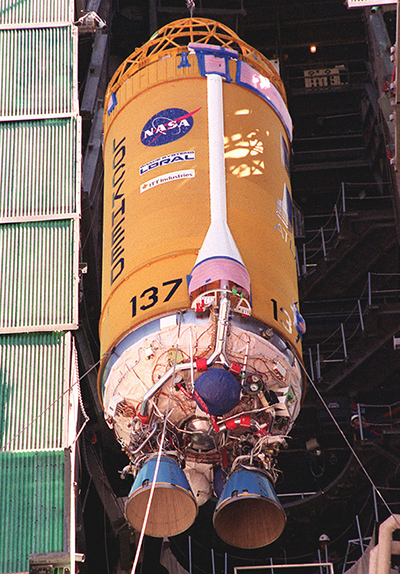
The Centaur upper-stage rocket, always powered by one or two RL10 engines, remains the country’s most-used upper stage more than half a century after its first flight.
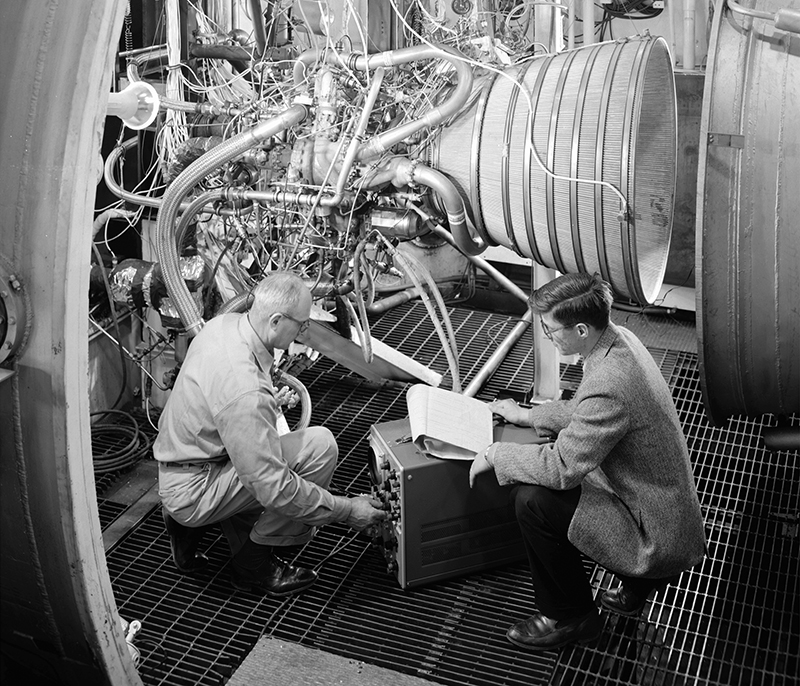
NASA engineers examine an early RL10 rocket engine in the Propulsion Systems Laboratory at Lewis Research Center (now Glenn Research Center).

Four RL10 engines are planned to power the Exploration Upper Stage that will be the first to carry astronauts in NASA’s Orion capsule. In its storied history, the RL10 has not yet been used in human spaceflight. Image courtesy of Boeing




